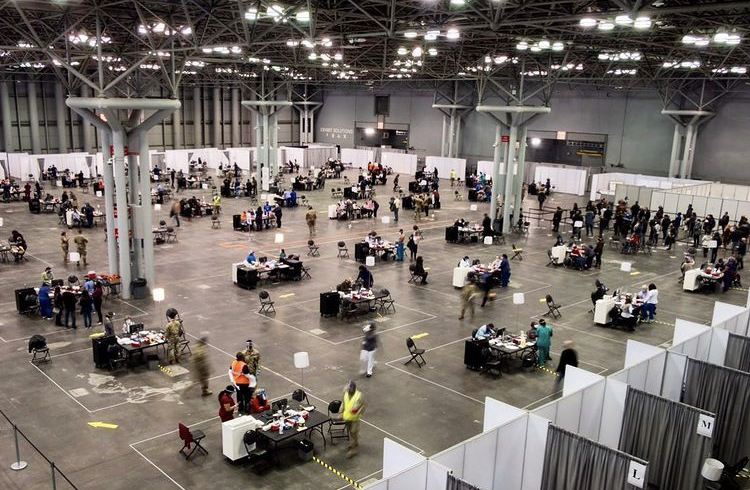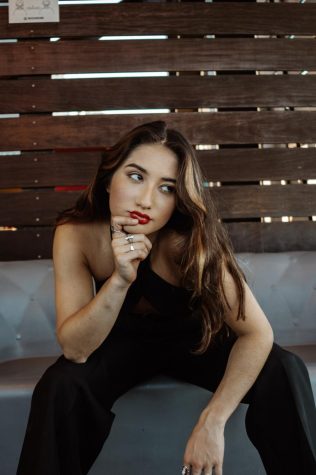Vaccine rollout and what it means for students
March 11, 2021
On Dec. 11, 2020 the FDA authorized the Pfizer and BioNTech vaccine for “Emergency Use,” to protect individuals 16 years of age and older against COVID-19.
The Pfizer-BioNTech vaccines require two doses, with a 21-day interval between the first and second dose, proven to be 95 percent effective in preventing infection.
University sophomore Sagar Patel was fully vaccinated with the Pfizer-BioNTech vaccine at Valley Hospital in Ridgewood, NJ.
Patel’s mother, a cancer survivor and an essential health care worker at Valley Hospital in Ridgewood, NJ and Holy Name in Teaneck, NJ, and her family members qualified for vaccination under Phase 1b.
A week after the Pfizer-BioNTech received authorization, the FDA issued another “Emergency Use” authorization for the second vaccine, Moderna, for use in individuals 18 years of age and older.
Moderna’s vaccine also requires two doses, but with a 28-day interval between the first and second dose, proven to be 94.1 percent effective in preventing infection.
The latest vaccine, developed by Johnson & Johnson, was issued an EUA from the FDA on Feb. 27, for individuals 18 years of age and older.
The Johnson & Johnson vaccine is a one-stop shop, requiring only one dose in comparison to the Pfizer-BioNTech and Moderna two-shot regimen, though the company is studying the impact of a second dose.
Johnsons & Johnson’s vaccine is proven to have a 71 percent efficiency rate in the U.S. and 66 percent efficiency overall. However, recent studies show the overall percentage has dropped to 57 percent in South Africa where a highly contagious variant has skyrocketed case numbers.
Although all three vaccinations have proven effective in preventing COVID-19, Mayo Clinic urges vaccinated Americans to continue safety protocols.
Further research is being conducted to understand the amount of immunity the coronavirus vaccines provide and how long the protection will last.
University professor Jeremy Levine qualified to receive the Pfzier-BioNTech vaccine under Phase 1b through volunteer work, and was vaccinated at a Catholic-run assisted living facility in Woodbridge, NJ.
Levine is relieved after being fully vaccinated, but continues to remain diligent with safety precautions.
“My experience has been to take this as seriously as possible and even when getting the vaccine, they tested everyone beforehand and reminded us multiple times that we still had to be responsible,” says Levine.
“Just because I can breathe a little sigh of relief since getting the vaccine, doesn’t mean I don’t still have an obligation to do my part to help this country finally crush the curve,” Levine continued.
Patel shares the same relief and diligence as Levine, being fully aware that although he and fellow Americans are being vaccinated, the fight against the coronavirus is not over.
“Having everyone in the house vaccinated makes it less of a worry about going out because those close to me are safe. I still worry because although I may have the vaccine, I can still spread the virus,” says Patel.
Pfizer-BioNTech made an agreement with the U.S. Government to supply a total of 200 million doses of their vaccine by July 31, including five doses within each vial.
Moderna’s agreement with the U.S. Government ensures 100 million doses will be delivered by the end of March, 100 million doses by the end of May through the end of July, and a final shipment of 100 million doses by the end of July through September.
Johnson & Johnson’s CEO Alex Gorsky told NBC’s “Today” show that 4 million vaccines were shipped on March 1, adding that 100 million vaccines should be distributed by June 2021 and one billion should be distributed by the end of the year.
“I have zero concerns about the legitimacy of the vaccine. I trust Dr. Fauci and others when they say the different vaccines are safe,” says Levine.
New York State is now vaccinating Phase 1a and Phase 1b groups. Eligible New Yorkers include health-care workers, first responders, staff and residents of nursing homes, individuals age 65 and older, individuals age 16 and older with comorbidities and underlying health conditions, P-12 public or non-public school district or staff, public transportation employees, in-person college faculty and instructors and employees in the food and hotel industry.
As of March 6, New York City has administered at least one vaccine dose to 1,307,424 people, while 629,920 people have received both doses.












